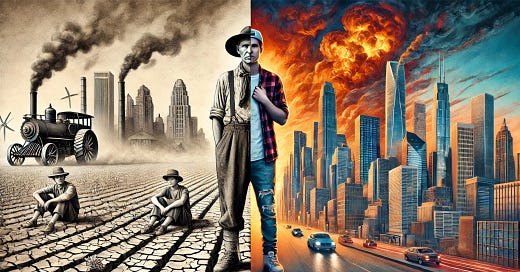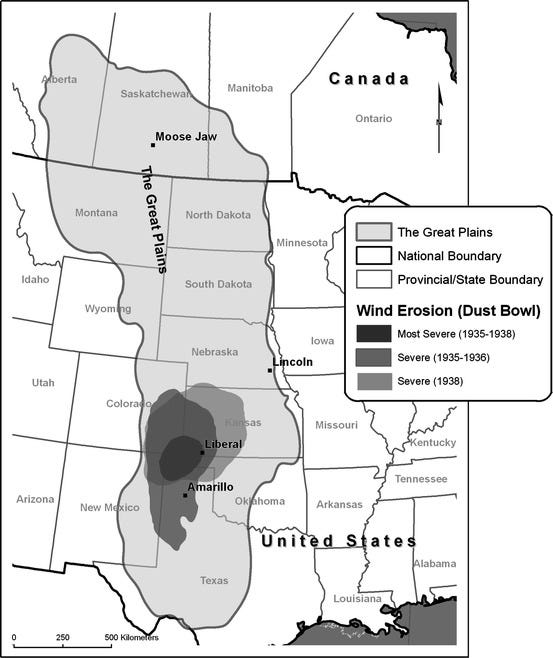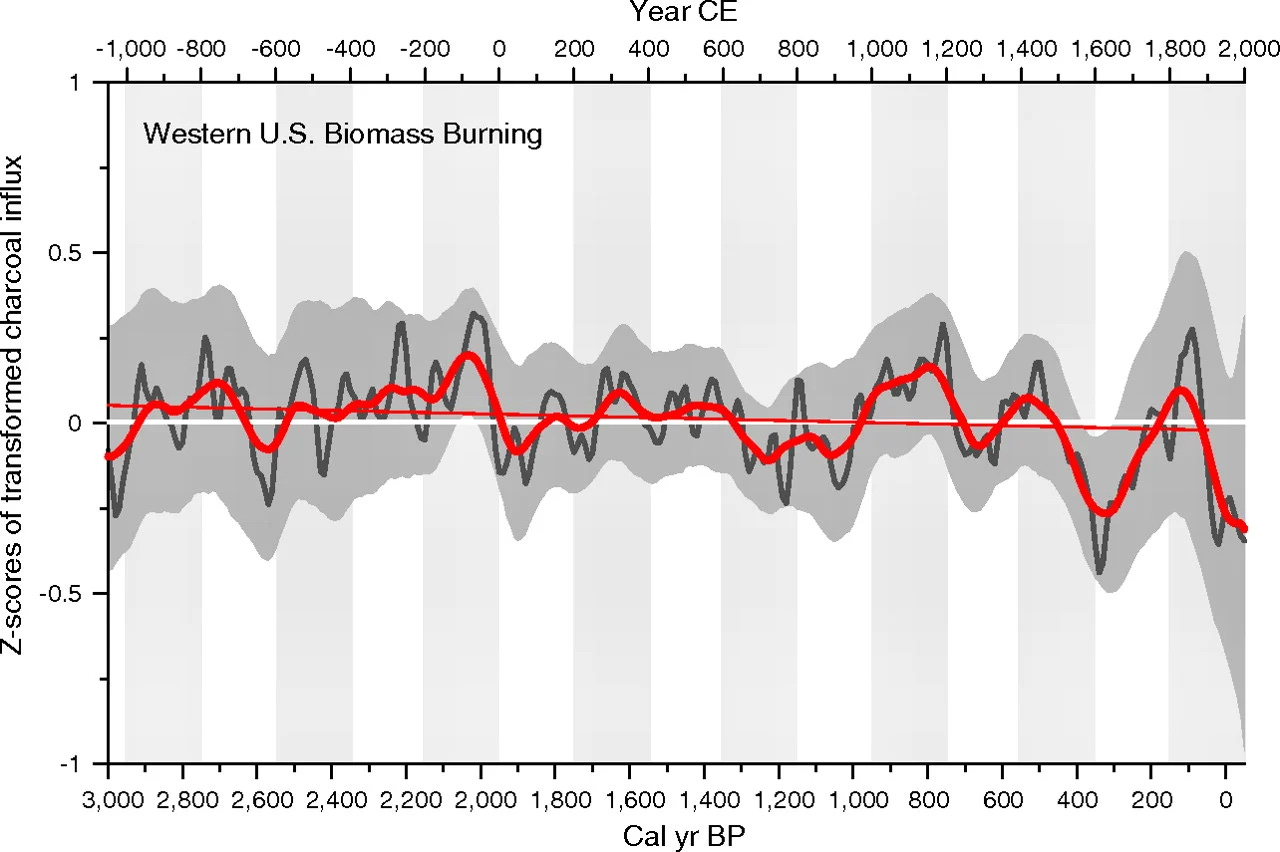The Portrait of a Scapegoat
California risks learning the wrong lessons from its wildfire disaster. It's time to take The Sniff Test.
The Narrative of the Day
The purpose of government is to make people’s lives better. Among the first responsibilities is to keep them safe, from each other and from natural disasters. This can be forgotten in a system where one party rules and the primary political purpose becomes fealty to the narrative.
The Los Angeles wildfires are a tragedy, although there are deep divisions as to why. At one extreme they are a reason to accelerate decarbonisation to offset global warming. At the other they are testimony to the worst excesses of Diversity, Equity and Inclusion. Both are big picture narratives and neither helps a city in need of rebuilding and protecting.
Disasters such as Three Mile Island and 9/11 shaped policy for decades. Los Angeles needs political leaders to provide relief today, but its future depends on their long run responses. The legacy of another natural disaster, exacerbated by humans and drought, overshadows what that may mean.
Another Environmental Disaster
Between the Civil War and the 1930s, around 30% of the American Great Plains was converted to farmland, and much of the rest used to raise livestock. This was spurred by government policies known as homesteading, which awarded land to inexperienced settlers and speculators seeking secondary income from mechanisation and monoculture. The westwards expansion of the US was supported by cultural memes such as Manifest Destiny and “rain follows the plow”, the spurious belief that farming creates a climate conducive to farming.
In May 1934, a dust storm from the west blotted out both the Statue of Liberty and Capitol building. Eleven months later on Black Sunday, 3 million tons of topsoil blew off the Great Plains. Over the course of the 1930s, 2.5 million people threatened with starvation, migrated from Texas, New Mexico, Colorado, Nebraska, Kansas and Oklahoma, many into California. The Dust Bowl coincided with the Great Depression and set off a chain of events that shapes how government acts today.
Decades of Policy
The exact causes of prolonged droughts are debated. Atmospheric conditions and Pacific sea temperatures during the La Niña phase of the El Niño Southern Oscillation are considered the likeliest causes in the mid and western US. A “drought atlas” of the past 1,000 years constructed from tree rings, shows Dust Bowl conditions to be uncommon but not unlikely. The extent of the suffering in the 1930s and the subsequent narrative that shaped policy for decades, was due to human activity on the Great Plains. Humans are unique in being capable of shaping their environment, for better or worse.
The risks of soil erosion were well known. Hugh Hammond Bennett published Soil Erosion: A National Menace in 1928, but Congress did not spring into action until after the event. Disasters create opportunities for politicians to make or break their reputations, whereas preventing disasters adds to the deficit and garners no plaudits. These are the stakes in the political game.
The Soil Conservation Service was created in 1935 as part of the New Deal, a series of laws that transformed the part played by the federal government in the US economy. Over the next five decades it expanded its role throughout the country, from public to private lands, and took responsibility for all of America’s natural resources. In recognition, the SCS was renamed the Natural Resources Conservation Service in 1994.
Today the NRCS employs 12,000 people from nearly 3,000 offices. Its primary role has changed from local action, such as tree planting and tilling techniques, into overseeing vast government spending with muddled intentions. According to the NRCS website, over the last two decades financial assistance for conservation has increased “many times over”. The agency was granted $19.5 billion from the Inflation Reduction Act.
The Dust Bowl breathed life and purpose into the New Deal, which has been the blueprint for federal government intervention in the economy ever since. It meant that local disasters had nationwide impact. In 1969, the Cuyahoga River in Cleveland caught fire for a second time. The Environmental Protection Agency was formed a year later and the Clean Water Act passed in 1972. This creates the impression that there is a big picture solution to every local problem. Nowhere does big picture better than California.
One Party Politics
The Los Angeles wildfires come after a period of prolonged drought. Last winter was wetter than average, which increased vegetation. Then the summer drought extended to the year end, leaving the land vulnerable to fire. The trigger is not known, but the finger points at faults in the electric grid.
Fire is part of the natural process of renewal in the grasslands on which Los Angeles is built. The county tops the Federal Emergency Management Agency’s list of nationwide fire risks. But we can still build cities here and to argue we shouldn’t is the Spaceship Earth denial that we are capable of shaping our environment. How we shape it matters, however, and most political policies impact our footprint.
Referendums are a regular feature of Californian politics. Proposition 103, passed in 1988, in the most part prevents insurers using predictive climate models to set insurance premiums. As a result, houses go uninsured and the state picks up the tab until it runs out of money. If homeowners had to pay market price for insurance, they would make houses fire resistant and be more careful where they build.
Property taxes are capped at 1% of value by Proposition 13, which limits the growth of the State’s income. Properties are only revalued after a sale, or a rebuild following a wildfire. Angelenos are facing big tax hikes. Would more money have led to better fire prevention measures? We’ll never know, but we do know that one-party governments grow stale. Without the risk of being voted out of office, apparatchiks advance through devotion to the party line. As a result, policies drift further from what the public wants or needs.
California’s system of referendums is not the fault of one party. It is however, a warning that people who want to pay less tax and receive more services should not decide policy. They already decide who governs and choose the same party time and again. The politicians of that party turn their gaze towards a bigger picture of moral crusades and global issues. California may be a state the size of a country, but that is not the role of local politics.
What’s the Alternative?
The last 10 years are the hottest on record. Temperatures in 2024 reached 1.5°C above pre-industrial times, an arbitrary line but one symbolising a tipping point in our relationship with nature. The world still emits 100 million tonnes of carbon dioxide a day.
Human-caused climate change is the best explanation of warmer temperatures. This is accepted by 97% of publishing climate scientists and over 90% of earth scientists and meteorologists. The techniques used to create the models to test this explanation are as robust as any we have developed. Those who deny this understanding must provide a superior alternative explanation of the evidence.
California wildfires rose fivefold from 1996 to 2021 compared to 1971 to 1995. Wildfires have increased across the US. Is this climate change? The 20th century witnessed among the lowest instances of biomass burning over the past 3,000 years, according to charcoal records. This is despite rising temperatures and lower rainfall, which correlate with increased burning over this long period.
The primary reason for fewer fires was land use change. Animals grazed grasslands and compacted the soil. Roads criss-crossed the landscape providing firebreaks. Following the 1910 “Big Blowup” that burned 3 million acres in Montana, government policy was to suppress fires. This works, but allows flammable vegetation to accumulate. In recent decades, controlled burning has increased, but California was late to adopt this, lacking experts to control fires and suffering droughts during which deliberate burning is not possible.
It would be remarkable if climate change over such a short period caused the fivefold increase in wildfires this century. Other human factors are at work. Farming uses 80% of the water diverted for human use in California. 10% alone is for growing almonds and the state specialises in other water-intensive crops such as rice, alfalfa and pistachios. California is critical to US food supply, but growing it depletes the water table and creates a fire hazard.
Read the Room
The Californian economy is the fifth largest in the world and bigger than Britain’s. It has the resources to recover from this disaster, but requires a change in policy priorities. The vibe shift in America is not just about turning away from culture war politics, it is the rejection of grandiose goals in favour of local action with immediate impact.
Political leaders must embrace the vibe shift and focus on the priorities of the people rather than of special interest groups. This way a Californian Democrat could emerge with credit from this episode and be a credible candidate for the presidency in 2028.
A failure to enact ground level policies in Los Angeles will be fatal for political careers. Painting climate change as the scapegoat for the city burning, will keep the Democrats on the wrong side of political polarisation, where they have been skulking since November 5.







